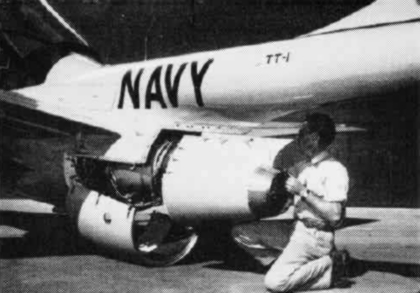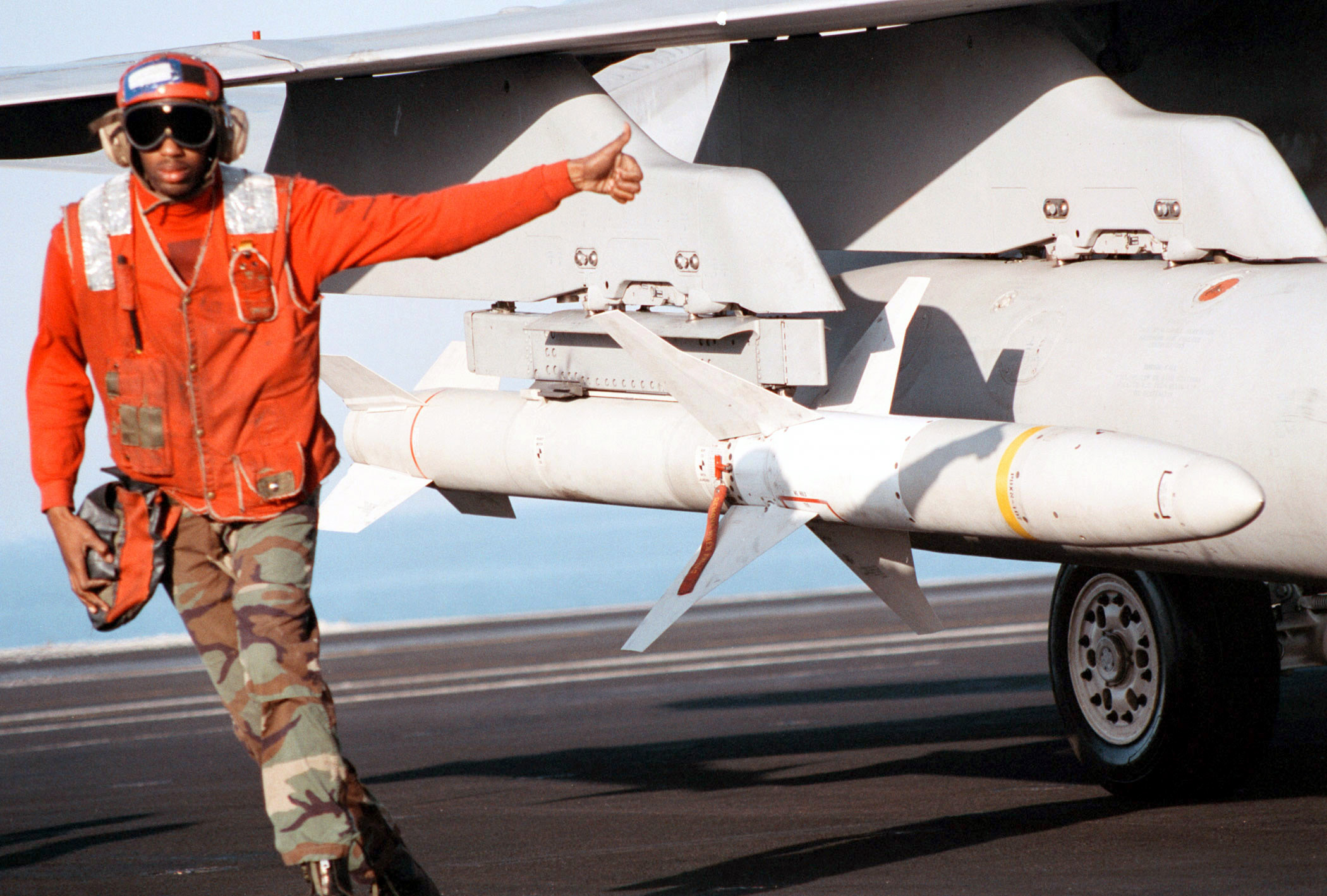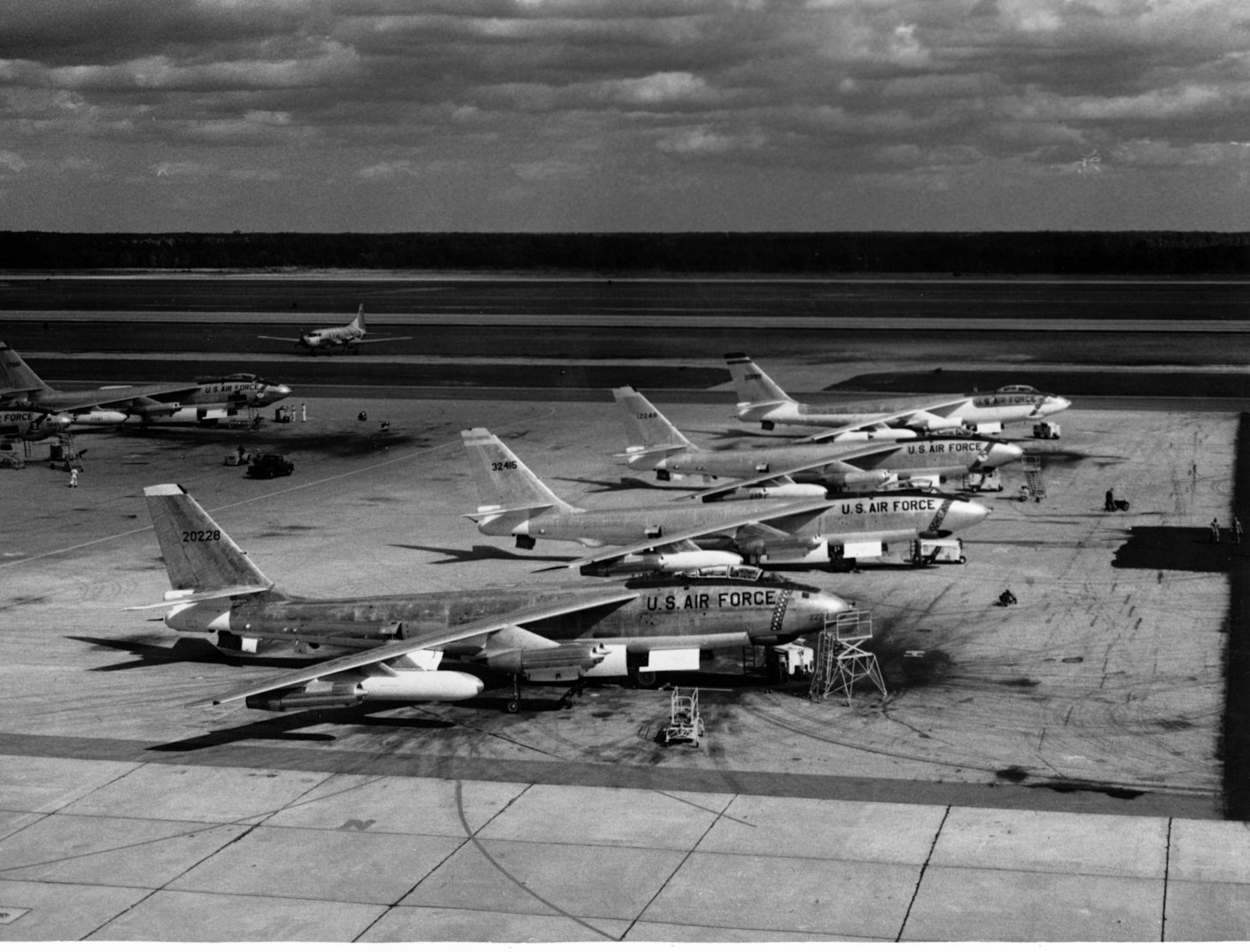|
GAM-67 Crossbow
The GAM-67 Crossbow was a turbojet-powered anti-radar missile built by Northrop's Ventura Division, the successor to the Radioplane Company who developed the Crossbow's predecessor, the Q-1 target drone. Development In the late 1940s, the Radioplane Company developed a set of prototypes of the Q-1 target series, which used pulsejet or small turbojet engines. Although the Q-1 series was not put into production as a target, it did evolve into the USAF RP-54D / XB-67 / XGAM-67 Crossbow anti-radar missile, which was first flown in 1956. It was also considered as a platform for reconnaissance, electronic countermeasures, and decoy roles. The Crossbow had a cigar-shaped fuselage, straight wings, a straight twin-fin tail, and an engine inlet under the belly. It was powered by a Continental J69 turbojet engine, with 4.41 kN (450 kgf/1,000 lbf) thrust. Two Crossbows could be carried by a Boeing B-50 Superfortress bomber, while four Crossbows could be carried by a Boeing B- ... [...More Info...] [...Related Items...] OR: [Wikipedia] [Google] [Baidu] |
Boeing B-47 Stratojet
The Boeing B-47 Stratojet (Boeing company designation Model 450) is a retired American long- range, six-engined, turbojet-powered strategic bomber designed to fly at high subsonic speed and at high altitude to avoid enemy interceptor aircraft. The primary mission of the B-47 was as a nuclear bomber capable of striking targets within the Soviet Union. Development of the B-47 can be traced back to a requirement expressed by the United States Army Air Forces (USAAF) in 1943 for a reconnaissance bomber that harnessed newly developed jet propulsion. Another key innovation adopted during the development process was the swept wing, drawing upon captured German research. With its engines carried in nacelles underneath the wing, the B-47 represented a major innovation in post-World War II combat jet design, and contributed to the development of modern jet airliners. Suitably impressed, in April 1946, the USAAF ordered two prototypes, designated "XB-47"; on 17 December 1947, the first ... [...More Info...] [...Related Items...] OR: [Wikipedia] [Google] [Baidu] |
Northrop Corporation
Northrop Corporation was an American aircraft manufacturer from its formation in 1939 until its 1994 merger with Grumman to form Northrop Grumman. The company is known for its development of the flying wing design, most successfully the B-2 Spirit stealth bomber.Parker, Dana T. ''Building Victory: Aircraft Manufacturing in the Los Angeles Area in World War II,'' pp. 93-106, Cypress, CA, 2013. . History Jack Northrop founded 3 companies using his name. The first was the Avion Corporation in 1928, which was absorbed in 1929 by the United Aircraft and Transport Corporation as a subsidiary named "Northrop Aircraft Corporation" (and later became part of Boeing). The parent company moved its operations to Kansas in 1931, and so Jack, along with Donald Douglas, established a "Northrop Corporation" located in El Segundo, California, which produced several successful designs, including the Northrop Gamma and Northrop Delta. However, labor difficulties led to the dissolution of ... [...More Info...] [...Related Items...] OR: [Wikipedia] [Google] [Baidu] |
Continental J69
The Teledyne CAE J69 was a small turbojet engine originally produced by Continental Aviation and Engineering (CAE) under license from Turbomeca. The J69 was a development of the Turbomeca Marboré II. It powered a number of U.S. drones, missiles and small aircraft. The engine was later produced by Teledyne CAE. The J69 was also developed into the Teledyne CAE J100 turbojet optimized for operation at higher altitudes. Variants ''Data from:''Aircraft engines of the World 1957 ;J69-T-1: (Marboré I) at 23,000 rpm. ;J69-T-3: at 22,500 rpm for take-off. ;J69-T-6: ;J69-T-9: ;J69-T-17: ;J69-T-19: ;J69-T-19A: ;J69-T-19B: ;J69-T-23: ;J69-T-25: ;J69-T-27: ;J69-T-29: ;J69-T-31: ;J69-T-33: ;J69-T-39: ;J69-T-41: ;J69-T-41A: ;J69-T-406: ;J100-CA-100: thrust ;CJ69-1025: ;CJ69-1400: lb thrust ;Model 352: ;Model 352A: ;Model 352-5a: (CJ69-T-1025) thrust ;Model 354-12: (J69-T-27) thrust ;Model 356-7A: (J69-T-29) thrust ;Model 356-7D: (J69-T-29) thrust ;Model 356-8: (J69-T-31) thrust ;Mo ... [...More Info...] [...Related Items...] OR: [Wikipedia] [Google] [Baidu] |
RATO
Rato is a village in the Cornillon commune in the Croix-des-Bouquets Arrondissement, Ouest Ouest (French for west) may refer to: *Ouest (department), Haiti *Ouest Department (Ivory Coast), defunct administrative subdivision of Ivory Coast * Ouest Province, Cameroon * Ouest Province, Rwanda *Ouest-France, a French newspaper * West France ... department of Haiti. See also * Cornillon, for a list of other settlements in the commune. References Populated places in Ouest (department) {{Haiti-geo-stub ... [...More Info...] [...Related Items...] OR: [Wikipedia] [Google] [Baidu] |
Anti-radar Missile
An anti-radiation missile (ARM) is a missile designed to detect and home in on an enemy radio emission source. Typically, these are designed for use against an enemy radar, although jammers and even radios used for communications can also be targeted in this manner. The earliest known anti-radiation weapon is a variant of the Blohm & Voss BV 246 radar guided bomb. Air-to-surface Most ARM designs to date have been intended for use against ground-based radars. Commonly carried by specialist aircraft in the Suppression of Enemy Air Defenses (SEAD) role (known to United States Air Force as "Wild Weasels"), the primary purpose of this type of missile is to degrade enemy air defenses in the first period of a conflict in order to increase the chance of survival for the following waves of strike aircraft. They can also be used to quickly shut down unexpected surface-to-air missile (SAM) sites during an air raid. Often, SEAD escort aircraft also carry cluster bombs, which can be ... [...More Info...] [...Related Items...] OR: [Wikipedia] [Google] [Baidu] |
Radioplane Company
The Radioplane Company was an American aviation company that produced drone aircraft primarily for use as gunnery targets. During World War II, they produced over 9,400 of their Radioplane OQ-3 model, a propeller-powered monoplane, making it the most-used target aircraft in the US. In the post-World War II era they introduced their Radioplane BTT series, which was produced for years and eventually reached almost 60,000 examples. They also produced several radio control and self-guided missiles, the largest being the GAM-67 Crossbow, which didn't enter service. The company was purchased by Northrop Corporation in 1952, and moved to one of Northrop's factories in 1962. One of the last projects carried out at the original Radioplane factory in Van Nuys, California, was the construction of the Gemini Paraglider. History Reginald Denny Hobby Shops Reginald Denny served with the Royal Flying Corps during World War I, and after the war emigrated to the United States to seek his fort ... [...More Info...] [...Related Items...] OR: [Wikipedia] [Google] [Baidu] |
Radioplane Q-1
The Radioplane Q-1 was an American target drone, developed in the early 1950s for the United States Air Force by the Radioplane Company. Originally powered by a pulsejet engine, then later developed as an improved turbojet-powered aircraft, the Q-1 failed to win the favor of the USAF. However, the aircraft provided the basis of the GAM-67 Crossbow anti-radar missile. Design and development Shortly after its formation in 1948, the United States Air Force issued a specification calling for a new type of high-speed target drone. Required to be jet-powered to provide the most realistic training, the contract for the development of the drone was given to the Radioplane Company, later a division of Northrop. Powered by a single Giannini PJ39 pulsejet engine, the drone, given the designation RP-26 by the company and XQ-1 by the USAF, was a high-wing, rocket sled launched aircraft. Originally fitted with a large single vertical stabiliser, the design was modified to a twin tail conf ... [...More Info...] [...Related Items...] OR: [Wikipedia] [Google] [Baidu] |
Turbojet
The turbojet is an airbreathing jet engine which is typically used in aircraft. It consists of a gas turbine with a propelling nozzle. The gas turbine has an air inlet which includes inlet guide vanes, a compressor, a combustion chamber, and a turbine (that drives the compressor). The compressed air from the compressor is heated by burning fuel in the combustion chamber and then allowed to expand through the turbine. The turbine exhaust is then expanded in the propelling nozzle where it is accelerated to high speed to provide thrust. Two engineers, Frank Whittle in the United Kingdom and Hans von Ohain in Germany, developed the concept independently into practical engines during the late 1930s. Turbojets have poor efficiency at low vehicle speeds, which limits their usefulness in vehicles other than aircraft. Turbojet engines have been used in isolated cases to power vehicles other than aircraft, typically for attempts on land speed records. Where vehicles are "turbine-pow ... [...More Info...] [...Related Items...] OR: [Wikipedia] [Google] [Baidu] |
Boeing B-50
The Boeing B-50 Superfortress is an American strategic bomber. A post–World War II revision of the Boeing B-29 Superfortress, it was fitted with more powerful Pratt & Whitney R-4360 radial engines, stronger structure, a taller tail fin, and other improvements. It was the last piston-engined bomber built by Boeing for the United States Air Force, and was further refined into Boeing's final such design, the B-54. Although not as well known as its direct predecessor, the B-50 was in USAF service for nearly 20 years. After its primary service with Strategic Air Command (SAC) ended, B-50 airframes were modified into aerial tankers for Tactical Air Command (TAC) (KB-50) and as weather reconnaissance aircraft (WB-50) for the Air Weather Service. Both the tanker and hurricane hunter versions were retired in March 1965 due to metal fatigue and corrosion found in the wreckage of KB-50J, ''48-065'', which crashed on 14 October 1964. Design and development Development of an improved B- ... [...More Info...] [...Related Items...] OR: [Wikipedia] [Google] [Baidu] |
B-47 Stratojet
The Boeing B-47 Stratojet (Boeing company designation Model 450) is a retired American long-range, six-engined, turbojet-powered strategic bomber designed to fly at high subsonic speed and at high altitude to avoid enemy interceptor aircraft. The primary mission of the B-47 was as a nuclear bomber capable of striking targets within the Soviet Union. Development of the B-47 can be traced back to a requirement expressed by the United States Army Air Forces (USAAF) in 1943 for a reconnaissance bomber that harnessed newly developed jet propulsion. Another key innovation adopted during the development process was the swept wing, drawing upon captured German research. With its engines carried in nacelles underneath the wing, the B-47 represented a major innovation in post- World War II combat jet design, and contributed to the development of modern jet airliners. Suitably impressed, in April 1946, the USAAF ordered two prototypes, designated "XB-47"; on 17 December 1947, the fir ... [...More Info...] [...Related Items...] OR: [Wikipedia] [Google] [Baidu] |







